Brent Strang
Artists seeking to expand the bounds of expression are constantly incited to explore the fringes of representation and draw inspiration from other art forms. This ambition infused the theories of Antonin Artaud (1896-1948), who envisioned a radical new theatre with a ritual function, a kind of transformational alchemy designed to disrupt the spectator from indolent passivity. Whereas Western theatre was psychology-based, lulling the viewer to sleep within the safe-zone of voyeuristic pleasure, Artaud called for a spectacle-based Theatre of Cruelty that is routed through the body. Agitating the body’s senses and base organs, the Theatre of Cruelty summons the body’s pre-rational awareness to the light of consciousness. Artaud believed we ‘think’ first with our senses, therefore we should not give the rational mind primacy by subordinating all elements of drama to what Artaud called ‘the tyranny of the text’. Instead, the text should only serve as a point of departure from which all aspects of mise-en-scène and sound are re-innovated into a spectacle, seeding a multiplicity of ideas that run counter to a unified aesthetic or dominant ideology.
Because of cinema’s ever increasing capacity to profoundly affect the spectator, it should come as no surprise that certain films scattered throughout film history closely align with Artaud’s original vision, two such films being Akira Kurosawa’s Dodes’ka-den (1970) and Julie Taymor’s Titus (1999). Of the manifold ideas put forward in Artaud’s 1938 book, The Theatre and its Double, my discussion will narrow in on these films’ correspondence with two of Cruelty’s core principles: anti-rationalism and non-logocentrism. By defying the rules of conventional psycho-dramaturgy and venturing outside logocentrism and genre, these two films demonstrate Cinema of Cruelty’s capacity to float unanchored in uncharted waters, liberating viewers from genre-instilled prejudices and unseating their faith in rational primacy. With the support of Eric Shouse’s and Gille Deleuze’s theories on affect and time-image, respectively, a methodology emerges to explicate how certain scenes generate the transformative affect Artaud demanded.
Starting out as a theatrical actor in 1921, Artaud also wrote three plays and a scenario for Germaine Dulacs’s film The Seashell and The Clergyman (1928). His only two productions – The Burnt Belly (1927) and The Cenci (1935) – were commercial failures, while his other play, The Spurt of Blood (1925), saw its first production years later by Peter Brook and Charles Marowitz as part of the Royal Shakespeare Company’s Theatre of Cruelty season in 1963-64. Even though all these productions lacked popular appeal, there is a continued interest in them for the practical application of Artaud’s radical core theories. In staging Spurt of Blood and other plays for the Theatre of Cruelty season, Brook both followed and deviated from Artaud’s two manifestos, experimenting with them not from “the blazing centre, [but beginning] very simply on the fringes” (qtd. in Gaffield-Knight iv). Brook had his actors express heightened psychological states without sound or movement to see if others could understand them through nothing but the sheer force projected from the actor’s interiority. Since the heart of the Theatre of Cruelty is ritualistic, to transform the spectator by rattling to consciousness dormant energies in the body and deep subconscious, artists should strive for representation on the edge of texts. Artaud once considered cinema’s potential for Cruelty but by the 1940s he lost faith, believing cinema’s mechanical representation of reality to be too literal to convey the “exigencies of life” transmitted as direct force in live theatre (Artaud 99). Despite this, since his death, many film scholars have argued for cinema’s potential for a genuine praxis of his theories. Surely, as long as filmmakers endeavour to represent the un-representable, to assail old ways of seeing, rattle socio-cultural foundations, and burst through comfort zones with implacable necessity, we can see a Cinema of Cruelty that resonates with the spirit of Artaud.
At the forefront, we encounter an epistemological challenge: qualifications need to be made regarding what is and is not proper to Artaud’s vision, because the phrase ‘cinema of cruelty’ is often used indiscriminately. François Truffaut lacked due diligence in this respect by titling his book of André Bazin’s essays as The Cinema of Cruelty (1987). The material chosen for this collection includes Bazin’s various writings on von Stroheim, Dreyer, Buñuel, Sturges, Hitchcock, and Kurosawa, and coheres more to a loose conception of ‘cruelty in cinema’ than anything resembling Artaud’s theories. In fact, neither Truffaut (who wrote the introduction) nor Bazin ever mention Artaud’s name or any of his ideas in the entire book. Instead, Cruelty is conceived as a trait defining certain filmmakers who have a distinctly amoral underpinning matched with a stylistic expressivity, often confronting the viewer with sadistic and savage imagery. While it does hold that a Cinema of Cruelty proper is not confined to a moral agenda, it is certainly not limited to films that exploit violence for shock effect. Cinema of Cruelty is dubbed cruel because it severs our connection to rational dominion, it stirs up sensations in our bodies that have not yet been harnessed and assimilated under thought; it is a “submission to necessity” that unseats our very sense of control (Artaud 102). In his essay “The Theatre of Cruelty and the Closure of Representation,” Jacques Derrida refers to it as a parricide: it is “the hand lifted against the abusive wielder of logos, against the father, against the God of a stage subjugated to the power of speech and text” (47). By all means, expansion of spectators’ consciousness is the cruel but essential purpose.
In his essay, “‘Cinemas of Cruelty?'” (2000), Francis Vanoye further clarifies a working definition for our purposes here. He claims that Artaudian cruelty is synonymous with Roland Barthe’s formulation of jouissance, meaning to “place in a state of loss to shake historical, cultural, or psychological foundations” (qtd. in Vanoye 181). It is not, Vanoye insists, the cinema of Quentin Tarantino “and his emulators, French or American, who make cruelty an object of representation and of spectatorial pleasure” (181). Therefore, the central focus is not the film text as object, but the spectator as a social-historical subject. As normalised and logocentric viewers, we bring to the cinema our ideological filters, consumptive proclivities, and habits of receiving, decoding, and interpreting narrative. What makes Artaud’s theory so compelling, and at the same time so challenging in practise, is that it recognises the weight of these forces that bind and narcotise in the film/viewer inter-relationship. A radical counterforce is then required to break through and seize spectators in their utmost vulnerability, where pre-conditioning offers no refuge and rational dominion cannot compute.
For this reason, Artaud favoured drama that speaks the language of dreams. In The Interpretation of Dreams, Freud discovered that in dreams words lose their logocentrism – they are plasticized like ‘things’ that can be mixed up and re-arranged according to the dream-work. The challenge in drama, then, is to plasticize all speech, sounds, characters and mise-en-scene and give them metaphoric value, like hieroglyphs that evoke non-lingual meanings in the deep subconscious of the viewer. This brings to mind the connection between Artaud and surrealism, however, an important distinction must be made: Artaud called for cinema that is dream-like, not cinema that merely represents dreams. This distinction was at the heart of the controversy regarding The Shell and the Clergyman. Dulac was going to credit Artaud’s script as “A Dream by Antonin Artaud.” However, Artaud took issue with this, declaring, “My script is not the representation of a dream and should not be considered as such” (qtd. in Talens 80). To consider the script as the representation of a dream limits it to the level of an object, an imitation of outward forms, and does not engage the phenomenological, inter-subjective relationship Artaud was envisioning. Even though it has long been acknowledged that Bunuel’s Un Chien Andalou (1929) and L’Âge D’Or (1930) share a close affinity with Artaud, if surrealism does nothing more than copy dreams through random ordering of imagery, it falls short of his vision. For Artaud, it is the laws underlying the dream-work that must be learned and consciously put to practise:
It is not a question of suppressing the spoken language, but giving words approximately the importance they have in dreams…it is evident that one can draw one’s inspiration from hieroglyphic characters, not only to record these signs in a readable fashion which permits them to be reproduced at will, but in order to compose on the stage precise and immediately readable symbols. (Artaud 94)
Notwithstanding, at the heart of Bunuel’s style is a matter of theory that corresponds with Artaud: conceive of the viewer as an open space that is socially articulate and discursively deconstructable, not a passive viewer waiting to be fed a predetermined meaning.
In light of this remark, we may also note how genre can impede on the ‘open space’ of the viewer. William Blum argued how certain prejudices and expectations meddle with the Artaudian process in his 1971 article “Toward a Cinema of Cruelty.” He put three films up to the Cruelty litmus test: Abraham Polonsky’s Tell Them Willie Boy is Here (1969), Arthur Penn’s Bonnie and Clyde (1967), and Sam Peckinpah’s The Wild Bunch (1969). Blum believed certain genres that share a “common fabric of violence,” such as the horror, the Western, and the gangster film, lent themselves to the spirit of Artaud (26). His aim was to see if the shocking and repellent material of these genres could indeed “penetrate beyond the mind or feelings [of the viewer] straight through to the gut or the unconscious” (26). Of the three films, he determined that the exacerbation of violence in The Wild Bunch best achieved this effect. Such hyper-violence, he argued, worked as an end unto itself, as a social revelation of humankind’s brutality. For example, the opening scenes that show children roasting live scorpions or the excessively bloody slow-motion gun battles have a heightened and composed quality; the gruesome and horrific are lifted to the metaphysical so they may be posited as timeless themes in the way Artaud had prescribed. However, Blum argued that the full effect of Cruelty was ultimately hindered by the very fact that The Wild Bunch is a genre film:
The response to The Wild Bunch has been coloured by what the Western as a genre has preconditioned audiences to expect, and by their images of themselves as peaceful and non-violent. What is needed for the experience of Cruelty is not the refurbishing of an old genre, but the creation of a new one for which preconditioning does not exist or is minimal, and in which an audience can be induced to drop the mask of civilized pretensions (33).
Whenever genre films such as these attempt extremism in representation, they risk going so far beyond their generic context that audiences will displace the excess force meant for the spectator’s transformation onto a discursive reaction to the genre.
At this juncture, let us briefly summarise what we are looking for in a Cinema of Cruelty. It is not cruel iconography as much as films that are cruel to our accustomed ways of seeing. Meanwhile, genre films might not suffice if their deployment of cruelty only serves to reverberate against the genre’s previously established conventions-these films end up being remarkable revisionist art objects. Instead, the film should act as a subject empowered with transformational agency, a relentless maelstrom whose forces of “rigor, implacable intention and decision” threaten to undo the social-historical viewing subject (Artaud 102). As all films speak a symbolic language of sorts, we are looking for films that foreground symbol over realism so as to harness the raw power of archetype and communicate a depth beyond or beneath the ambit of words. Hence, it is not films that represent dreams but films that impinge upon us like those dreams, illuminating the constellations of our unconscious with a potency that lingers long afterwards.
All of the above qualities help to explain the mysterious power of Kurosawa’s Dodes’ka-den to unhinge the spectator. The film follows the mundane events of several families who inhabit ramshackle houses beside a garbage dump. It is not shocking, sadistic, excessively violent, or imitatively dream-like, and yet, its fundamental appeal is bizarre. It entreats the viewer to embrace the insane and the ludicrous as a buffer against a wretched reality. It pulls viewers to their threshold of ideological, cultural, and psychological foundations, forcing them to glimpse an unsettling vision of what lies beyond. The impact of Kurosawa’s own psycho-emotional state at the time should be taken into consideration on account of his attempted suicide soon after. In his book The Warrior’s Camera, Steven Prince describes how these external factors may have led to the peculiar narrative structure: “Unlike the way in which it functions for Brecht or Oshima, the non-linear narrative here signifies an entropic condition. The destructuring of social space in this film is doubly symptomatic: of the cultural abandonment of these slum characters and of Kurosawa’s own disengagement from the social fabric” (255). Even though he made the film in part “to prove [he] wasn’t insane,” it paradoxically emerged as the most non-linear and disconcerting films of his oeuvre (Prince 251).
Whereas Kurosawa’s earlier films typically showed the hero’s triumph through willpower, here the author’s own social disengagement informs the film with a fevered split-sensibility that deconstructs the viewing subject by way of osmosis. The characters all inhabit the same shantytown of rusted tin walls, waste and slag heaps of auto parts. It occupies no recognisable place in history; it is the exteriorised, post-apocalyptic junkyard of humankind’s bad conscience. Here, landscape has become so poisoned and devastated and the outlook so bleak and hopeless that the question of willpower to overturn circumstance is mockingly futile: only imagination, escapism, and insanity hold refuge. Each day the delusional boy, Rokkuchan (Yoshitaka Zushi), conducts his make-believe train through the village, regardless of the stones and insults hurled at him by the other, more ‘normal’ children. We know how the film must perceive Rokkuchan by the way we, too, hear the subjective train sounds that he imagines as well as the slightly off-kilter music that is part melancholy and part celebratory. Is the music cheering its hero for the strength of his solipsism? If so, the film contradicts itself when, later in the film, solipsism has a deadly cost. A beggar (Naboru Matani) inadvertently kills his son (Hiroyuki Kawase) by not heeding the warnings of others; he is so lost in his make-believe world imagining an ideal home in the hills that he feeds his son poisoned fish. The film seems to say the cost of delusion will kill you, and yet, in the final scene, Rokkuchan heroically drives his imaginary train back to the station, as though to still celebrate flight from reality as the only available means of salvation.
The film’s thoroughly depressed tone may account for such irrational conclusions, but the film’s form strategically scrambles the viewer’s habituated system of relations, as well. The narrative meanders sideways, portraying eight different character pairings as a slice of life. Each pairing has only a tangential connection to the next: they pass each other in the street but their stories bear no cause-effect relation to each other. Poverty and various forms of denial are their only common bonds. More disconcerting, there is no social or moral project to give shape to their stories. Bereft of the will to engage or transcend class oppression and without any antagonists to wrestle or defeat, the conventional arc of Aristotelian drama is flattened and traditional catharsis and identification models are denied. This puts the viewer in an unfamiliar standstill beside the characters. A shared space is created in which both are immersed in the material conditions of despair and cultural inertia, given nothing but the characters’ drunken reveries, delirium, and eccentric coping mechanisms to soothe their discomfort. In this entropic condition suspended outside the comforts of narrative, representational drama ceases and Artaudian cruelty begins. Instead of being carried away horizontally on the track of emotional identification, viewers are fixed in a vertical relationship with the image, assimilating its charge in episodic segments.
Julie Taymor’s Titus takes a different route but delivers viewers to the same threshold. Formally, Titus also negates psychology-based narrative, albeit in a different way from Dodes’ka-den, as Titus resists any firm sense of space or time. Setting, art-direction, costume, and music blend western cultural artefacts spanning the last two thousand years, creating a spectacle that is every time and no time in particular. Thus, Taymor puts into practise Artaud’s principle to explore cosmogonies and harness the power of myth and archetype: “Ideas which touch on Creation, Becoming, and Chaos, are all of a cosmic order and furnish a primary notion of a domain from which the theatre is now entirely alien” (Artaud 90). The ‘domain’ of Titus is established in the dialectical synthesis within montage and art direction that fuses together young and old, then and now, antiquated and modern technology.
Opening in a 1950s suburban kitchen, young Lucius (Osheen Jones) sits alone at a dinner table cluttered with food and toys (including, GI Joes, Roman soldiers and electric helicopters). Covered by a paper bag with holes for his eyes and mouth, a montage of various camera angles shows him dashing planes into a birthday cake, splattering figures into milk, and squirting ketchup like blood all over his war zone salmagundi. The momentum of the scene carries with it a battle-charged panic that overtakes the boy’s fantasy until suddenly, an explosion blows away the wall and flames burst into the house. A Shakespearean Clown (Dario D’Ambrosi) dressed in strongman circus garb with World War One Air force goggles rescues him and carries him down the stairs, kicking open the exit door. Cutting to the next sequence, a leap in time lands Lucius, now suddenly alone, in the middle of the Coliseum. Long lines of Roman infantry and spearmen enclose upon him in rigid staccato unison. From the far entrances, the cavalry rolls in mounted on motorcycles followed by armoured vehicles that fuse motorised technology with old Roman siege engines. Last to enter is General Titus (Anthony Hopkins) bearing a scarlet-red cape and rotund breastplate; his soldiers hail him. Now, Shakespeare’s play proper begins: the boy (still dressed in modern t-shirt and jeans) slips into the cast as grandson Lucius, henceforth a silent witness to the action. In this manner, Taymor’s spectacle transcends the particular and illustrates the universal. The siege engines once pulled by chariots forge ahead with the same ruthless determination as the mechanised divisions of today; young Lucius’ war games pluck the same chords of inner violence as the adults whose war infiltrates his home. War and violence exist in all times, in people of all ages, and here their ahistorical rendering sweeps humankind onto the metaphysical stage.
However, this spatial and temporal transcendence in Titus does not mean that it is unconcerned with history. Indeed, it is concerned with history, but in the broad sense, in the history of humankind as a whole. Were it to depict a specific historic period it might run the risk of displacing humankind’s foibles as products of socio-political or religious influences. Instead, the essence of the film is the legacy of humankind’s inhumanity to itself. This eternal Achilles’ heel is staged as spectacle and subsequently deconstructed by bold foregrounding in art direction. Consider, for example, how the persistence of ageless barbarism is elicited in the use of make-up. Throngs of Roman soldiers return from their war with the Goths caked in mud, as though all smeared with the same universal affliction. Even as the hybridisation of art direction extends the sense of time and space to the metaphysical, the grey mud is the common denominator, hearkening back to humankind’s place of origin in the primordial ooze. Historic interpretation is disregarded in favour of an Artaudian interest in cosmogony. In the same vein, the costumes of the Roman soldiers are infused with exactly Artaud’s vision: “age-old costumes, of ritual intent…[that] preserve a beauty and a revelational appearance from their closeness to the traditions that gave them birth” (96). When Titus files past his soldiers, the framing highlights his deep red cape and robust metal armour, signalling sacrifice and spilled blood, as well as humankind’s archetypal pride. All elements in the first two scenes suspend narrative logic and psychological identification, and in their stead, channel mythic currents of birth and origin through spectacle.
So, too, does the opening set the stage for a film that speaks the language of dreams. As in dreams, time and space lose their bearing and a sense of groundlessness suspends the viewer from realism. The diegetic world looks composed, surreal, and often absurd, spreading an undercurrent of uneasy ambience that may suddenly, like a live wire, turn loose to shock the viewer. To illustrate, the scene following the rape of Lavinia is set in a swampland with burnt timber jutting from the ground – a metaphorical landscape of her desolation and charred chastity. The camera dollies in from an extreme long shot, closing the spectator in on Lavinia’s pose of wretched agony. She is perched on a stump, as Taymor says, “like Degas’ ballerina” (DVD Commentary). Her hands are severed and replaced with branches, while her ravagers, Chiron (Johnathon Rhys Meyers) and Demetrius (Matthew Rhys), revile her with squeals and mockery as they prance and trip about in the mud. An elliptic dissolve cuts to Lavinia’s uncle, Marcus (Colm Feore), who happens upon her from hunting in the woods. Even as a character within the world of the play, he is confounded by the scene’s surrealism: “If I do dream, would all my wealth would wake me! If I do wake, some planet strike me down, that I may slumber an eternal sleep! Speak, gentle niece, what stern ungentle hand hath lopped and hewed and made thy body bare of her two branches? [a few beats] Why dost not speak to me?” She responds wordlessly; in a slow motion, low-angle shot, she opens her mouth to reveal a severed tongue that lets forth a stream of blood. Cut to a slow-motion reaction shot on Marcus’ subtle gasp of horror: vapours seep from his gaping mouth into the frosty air. The surreal art direction, haunting sound design, and unfathomable imagery are nightmarish, to be sure. Yet, Taymor does more than mimic dreams’ outward forms, she deploys these conventions in a conscious design that approximates the way dreams stir up affect.
To understand how this scene can have a cruel impact on the spectator, it may help to clarify some differences between emotion and affect, form and force, and the action-image and time-image. Eric Shouse makes some helpful distinctions in his article “Feeling, Emotion, Affect,” designating feelings as personal and biographical sensations that have been labelled and checked against previous experience, while emotions are the projections of such feelings. Because emotions display feelings, they can either be genuine or feigned. In contrast, Shouse defines affect as “a non-conscious experience of intensity… a moment of unformed and unstructured potential [which] is the most abstract because affect cannot be fully realised in language, and because affect is always prior to and/or outside of consciousness.” Hence, affect is the raw intensity that strikes us kinaesthetically. Strange and unfamiliar in itself, it corresponds to Artaud’s notion of channelling forces that breach the limits of the known. When we first sense affect, it is entirely new, but, if we become accustomed to the sensation, we find a way to be comfortable with it, mould it into our subjective experience, and label it in our consciousness as a feeling. Until then, it lurks outside our subjectivity as a force that threatens our civilised dominion. In contrast to affect and force, emotion and form are ‘representable.’ For example, an actor may search his lexicon of labelled feelings and represent an emotion by acting out its form (an integral part of the process of method acting). In short, emotion is a social experience that is represented as a form, while affect is a pre-personal intensity that is transmitted as a force.
Gilles Deleuze carries these concepts further with regard to cinema’s action-image and time-image. The action-image consists of narrative space-time logic and “allows itself to be determined in relation to goals and means which would unify” in a cohesive set (Deleuze 203). The time-image, on the other hand, has no teleological purpose but to simply show the palpability of the present moment; it corresponds with a cinema that speaks to the body’s intelligence. As Artaud stressed, it is through our body’s senses that spectators first perceive reality, and from these forces that linger in our body are they compelled to think, as opposed to the cause-effect logic of the mind. To demonstrate the distinction, the action-image is relied upon in classical narrative cinema for linear cause-effect patterns that subordinate space-time and feeling to the flow of the action. Using the action-image for feeling, we may see emotion represented in such techniques as the shot-reverse shot, in which an acted emotional reaction completes the expected response and moves the narrative along seamlessly. In this way, the drama can be watched from a safe distance – the audience will experience many feelings while identifying with the characters, but the familiarity of the feelings to their own personal experience will not threaten to shake their civilised comportment. This is precisely the type of theatre that Artaud despised. Instead, use of the time-image can channel forces and spark off affect to shock the viewer to new awareness.
For example, in the sequence after the rape of Lavinia, Marcus’ wordless reaction shot seems at first to reinforce the narrative continuity of emotional reaction, but it is more than a mere reaction. The shot is a carefully orchestrated transmission of affect through the time-image: it lingers in slow-motion long enough to capture the affective gravitas of the moment. Taymor carefully composes everything until this point to the last detail. Seeding the landscape with the kernels of bad dreams, she is like an alchemist preparing the groundwork for the spectator’s transformation. After stumbling upon Lavinia’s nightmare, Marcus is the locus that captures and transmits the energy of the entire scene. The actor becomes a conduit in a circuit running from spectacle to viewer – his physiognomy is the final transmitter. This type of acting recalls a distinction made by Edward Scheer in his article, “A Beginner’s Guide to Cruelty.” He distinguishes between representational acting that imitates life by assuming the forms of external reality – in essence ‘posing’ – and the type of acting that is suffused with archetypal currents that are purely responded to out of necessity (3-4).
In this case, wordlessness is key. Shakespeare’s words might obstruct the path of affect, detracting the force by processing it with language. In the original Shakespeare play, Marcus replies to Lavinia’s tongueless response with thirty-five lines of dialogue. It is a mounting exhortation of anger that ends with a loquacious lamentation. The melodrama inherent in the written text lends too easily to an emotional portrayal of the outward form of abhorrence. Surely, this would have displaced the power of the scene’s affect into conventionalised feelings that are pre-digested for the spectator, which is how Aristotelian catharsis fences viewers in a safety zone and cheats them of transformation. Alternatively, Taymor decided to cut the dialogue and add a lone melody from a bamboo flute. As a result, affect emanates like a ghost of electric shock reverberating in our cheekbones. Taymor bypasses the realm of logos and delivers the haunting spectre of the Real – viewers are forced thus to confront a horror beyond words.
The same basic process is at work in the scenes from Dodes’ka-den with Hei (Hiroshi Akutagawa) and his wife Ouchu (Tomoko Naraoka), which maximise affect through silence and bodily performance. After abandoning him years ago, Ouchu has returned to find her husband’s personality utterly hollowed out. In one scene, they sit together in his hut: Ouchu, in the background preparing rice, and Hei, in the foreground, weaving fabric, turned away from her. Despite her return he remains mute; he never looks at her, nor acknowledges her presence. His movements are characteristically robotic, unsubtle makeup casts a grey-white pallor upon him, and his eyes are always the same: wide, black, and lifeless. Still, she perseveres, hoping that the spell he is under will eventually break and they can heal their rupture. With Hei lacking any signs of life, our gaze is continually turned to Ochu to read the range of subtle alterations in her expression. What she must be thinking or feeling in these moments we can hardly know, and this is the intended effect. If she were to try to speak her feelings she would bridge the spectator to the safe zone of common language. By not venting emotion or translating emotion into an identifiable feeling, the complex well of affect retains its nascent energy. We are steadily subjected to this oppressive silence for the entire three-minute scene and, in the absence of linguistic or mimetic signifiers, are forced to process a close engagement with the Real in all its inchoate obscurity. If Ouchu had tried to put words to what she felt, language would reclaim the nebulous force acting upon us, crystallising it in an identifiable form, and hence, would only convey a fragment of its totality.
Hei’s utter devastation signifies the outermost exposure to the Real. Whereas all the other characters are saved by their precious modes of denial, Hei has strayed so far into darkness that he cannot express his experience in the light of quotidian reality. At some point, the trauma of the Real must have completely broken his defences and led his vulnerable psyche to ruin. Towards the end of the scene, when he and Ouchu sit side by side in silence, a draping cloth and candle (visible in the background) fissures the space between them. As he vacantly swallows his food and stares at nothing, her eyes begin to float away in thought. The division of the frame and Hei’s ghostlike appearance form an eerie tableau, as though his presence were no more than a superimposed apparition, an unreachable entity now only hovering around Ouchu as a vacuous portal into profound blackness.
Read this way, Hei’s muteness is one of a handful of open-ended strains that destabilises Dodes’ka-den‘s narrative system as a unified whole. His odd status as a functional catatonic insinuates more about what has happened to him than what he knows, just as the film depicts shattered mental states but does not have the language to explain the reality that caused them. The film’s form incorporates scenes like these to lay visible the spectral border region of sanity, delusion, and the unfathomable Real. The affect engendered impinges upon the spectators’ senses to precipitate profound states of consciousness. So very fine is the line between imagination and madness; hope and fancy only seem light and wonderful, while they mask a desperation that refuses to let in the Real. Dodes’ka-den is a complicated tale that relays incompatible, paradoxical conclusions – conclusions, we find inexplicably fitting given the nature of Kurosawa’s impeccably staged fever dream.
In the wider scope of things, these two very different films demonstrate some key aspects of a genuine Cinema of Cruelty. Dodes’ka-den confounds the viewer’s rationality through its split-sensibility and its meandering, open-ended formal structure. Titus, too, follows a dissociative narrative logic, and moreover, supports Artaud’s vision of breathing new life into old myths. Furthermore, with respect to William Blum’s findings on the incompatibility of Cruelty with genre, these films seem to partake of a ‘new genre’ where preconditioning is minimal. Though I think it is more beneficial to think of Cinema of Cruelty as a praxis or mode of filmmaking than a genre, its conventions cannot be typed by iconography or theme (codes of which are so often used to mislabel films as ‘cinema of cruelty’). Indeed, if they are defined by anything, it is primarily with regard to spectatorship. Rather than trying to identify a Cinema of Cruelty by a film’s conventions, or by its innovations, or even by comparing its features with Artaud’s manifestos, we might look to whether the film aims to impact the spectator in such a way that transformation is possible. As distinguished from the type of transformation intended in Brechtian cinema, however, Cruelty does not distance or alienate the spectator from emotional identification. Indeed, it works in the other direction, burrowing beneath emotion to seize upon its embryonic stages in order to convey unmitigated affect. If a Cinema of Cruelty can be considered a praxis of filmmaking that is post-genre, then we may look to the following features as some ways of identifying the Cruel impact on the spectator: the transmission of affect, the handling of force, the use of the time-image, the deprivileging of logos, formal and narrative de-structuring, and of course, little or no trace of pre-existing generic patterns.
Works Cited
Artaud, Antonin. The Theatre and Its Double. New York: Grove, 1958.
Bazin, Andre. The Cinema of Cruelty: From Bunuel to Hitchcock. Ed. Francoise Truffaut. New York: Seaver Books. 1982. Reprinted in 1987.
Blum,William. “Toward a Cinema of Cruelty.” Cinema Journal, Vol. 10, No. 2. (Spring, 1971), pp. 19-33. 7 Dec. 2007.
Deleuze, Gilles. Cinema 2: The Time-Image. Trans. Hugh Tomlinson & Robert Galeta, University of Minnesota Press, 1989.
Derrida, Jacques. “The Theatre of Cruelty and the Closure of Representation.” Mimesis, Masochism, & Mime. Ed. Timothy Murray. University of Michigan: University of Michigan Press, 1997.
Garfield-Knight, Richard Lee. Antonin Artaud: In Theory, Process and Praxis or, for Fun and Prophet. Feb. 10, 2008. <http://www.cyberpagedd.com/gaffield_knight/academic/antonin_artaud.htm#chap4>.
Prince, Stephen. The Warrior’s Camera: The Cinema of Akira Kurosawa. (Rev. and Expanded edition). New Jersey: Princeton University Press, 1991.
Scheer, Edward, ed. “Introduction: On Antonin Artaud, A Beginner’s Guide to Cruelty.” Antonin Artaud: A Critical Reader. Ed. Edward Scheer. London & New York: Routledge, 2004.
Shouse, Eric. “Feeling, Emotion, Affect.” M/C Journal 8.6 (2005). 19 Apr. 2006. <http://journal.media-culture.org.au/0512/03-shouse.php>.
Vanoye, Francis. “‘Cinema’s of Cruelty?’.” Antonin Artaud: A Critical Reader. Ed. Edward Scheer. London & New York: Routledge, 2004.

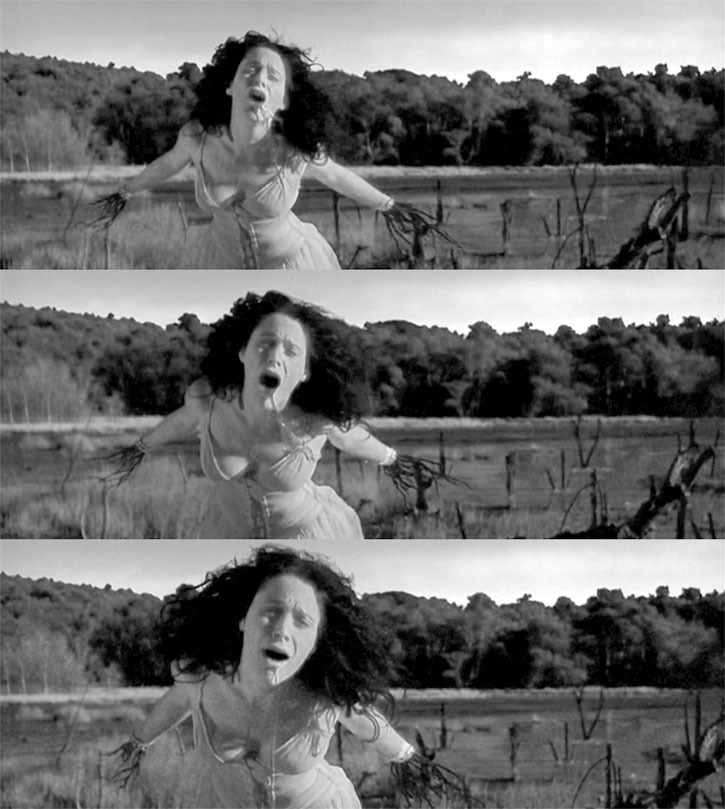
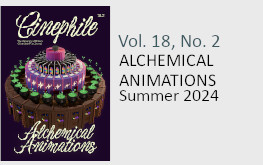
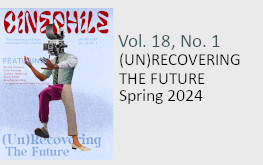
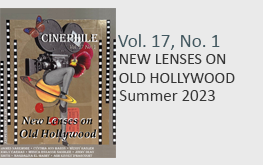
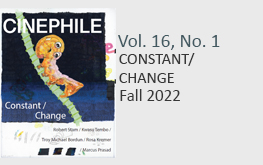
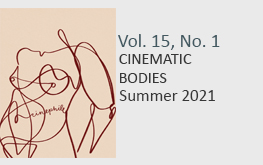
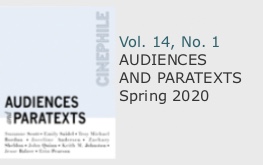
As a member of the editorial board of the French monthly Positif, and a contributor to a volume on Shakespeare Moderne coordinated by CNEL, a research centre of Paris X111 University, I am encountering some difficulty in locating a photograph of Laura Fraser in Taymor’s Titus on which my chapter on Shakespeare on the Screen concentrates. I have enjoyed reading the subtle text here and wonder if you could provide any information as to how to locate and get permission foruse a single shot of Fraser, this post-rape one is exactly right.The book is to be published by Harmattan. Non-commercial purposes.
Thanks for any helpyou may gice, Eithne O’Neill
i like the role of Anthony Hopkins in the movie Silence of The Lambs. this guy is simply amazing -`;
[…] practical activities in the theater barely qualified for this kind of cooptation.” Artists, particularly filmmakers, continue to weave his theories into their own work, but the end result is often failure. Mother!, […]